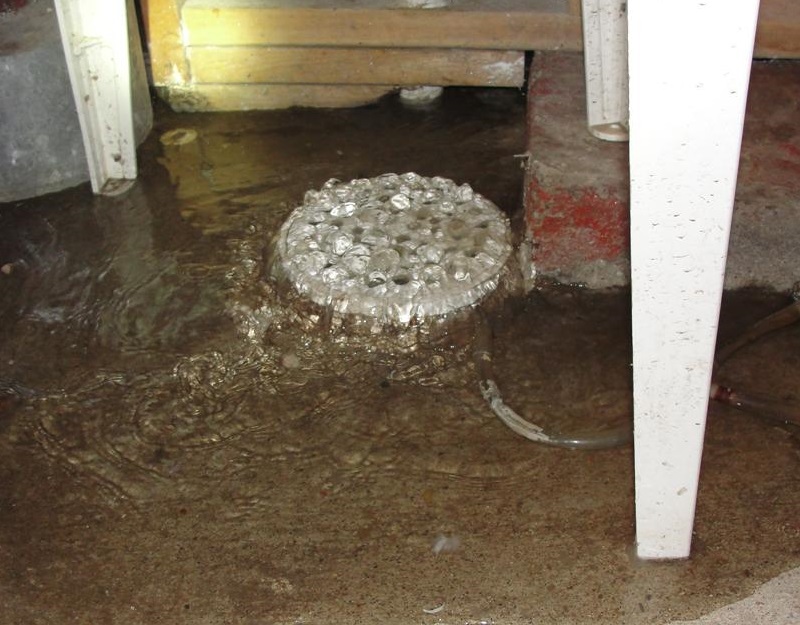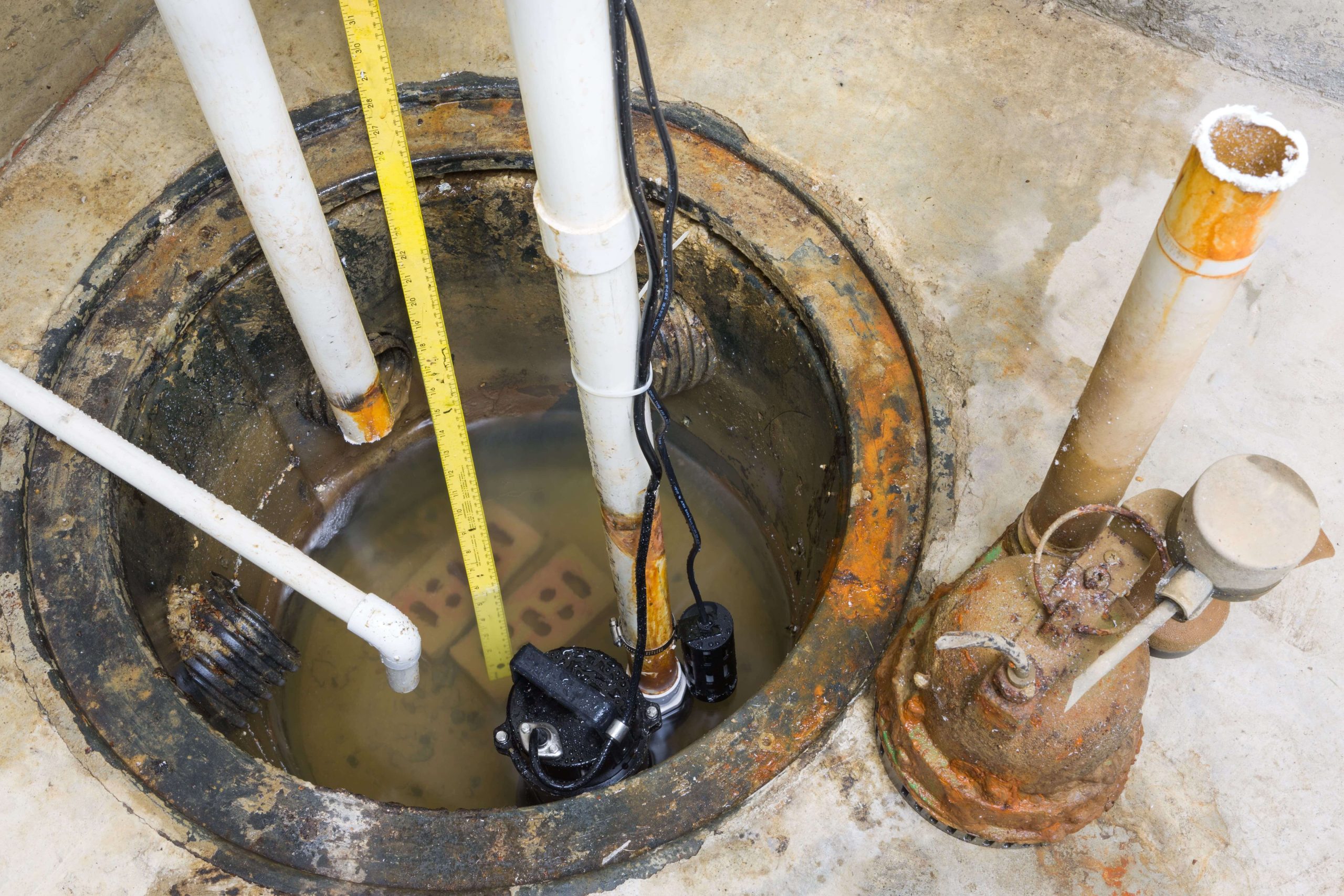Imagine this: you step out of a relaxing shower, only to find a puddle of murky water creeping up from your basement floor drain. What was once a simple act of hygiene has turned into a plumbing puzzle that leaves you feeling bewildered and frustrated. This common homeowner dilemma, often associated with heavy rainfall or extended water use, can be more than just an annoyance; it can be a sign of a deeper plumbing issue lurking beneath the surface.

Image: dragon-upd.com
This article will delve into the intricate world of basement floor drains and explore the various reasons why they might be backing up, especially after a shower. We’ll examine the common culprits behind this frustrating problem, offering practical solutions and preventive measures to keep your basement dry and your sanity intact. By understanding the interconnectedness of your plumbing system, you’ll be empowered to tackle this issue head-on and reclaim your basement’s peace.
Uncovering the Culprits: Why Your Basement Floor Drain is Backing Up
A basement floor drain backing up after a shower usually signifies a blockage somewhere within the plumbing system. Numerous factors contribute to this issue, each requiring a slightly different approach to resolve. Let’s investigate these common culprits:
1. The Unseen Blockage: Clogged Drainpipe
The most common reason for a basement floor drain backing up is a simple blockage in the drainpipe itself. Think of it like a highway for water: if there’s a pile-up, the traffic (water) backs up. Over time, a buildup of hair, soap scum, grease, and other debris can accumulate within the drainpipe, narrowing the passageway and hindering water flow.
Solution: The first step is to locate the drainpipe connected to your basement floor drain. You might need a flashlight and possibly a mirror to see inside this pipe. If you spot a blockage, you can try using a drain snake or plunger to remove it. For stubborn blockages, professional plumbing services may be necessary.
2. A Hidden Enemy: Sewer Line Clog
A clog in the main sewer line can create a cascading effect, causing both your basement floor drain and other drains to back up. Imagine the sewer line as the freeway connecting your house to the city’s wastewater treatment plant: a blockage there disrupts the entire flow, impacting all connected roads (drains).
Solution: A sewer line clog usually requires professional intervention. Plumbers often use specialized equipment like a camera to locate the clog and use a high-pressure water jet to dislodge it.

Image: www.epshawaii.com
3. The “Big Freeze”: Frozen Pipes
In colder climates, frozen pipes can cause a backup as the ice effectively restricts water flow. This phenomenon typically occurs during extreme winter weather, especially if the pipes run through an unheated area like a basement.
Solution: The best way to prevent frozen pipes is to insulate them properly. If you suspect your pipes are frozen, avoid running warm water on them as the sudden temperature shift can crack the pipe. Instead, contact a qualified plumber to help thaw the pipes safely.
4. An Overflowing Sink: The “Backup” Effect
Although it might seem counterintuitive, a blocked sink or laundry drain in an upstairs bathroom can cause your basement floor drain to back up. Think of it like a bottle: if one part fills up, the water can overflow into connected compartments. This is often due to a connection in the plumbing system called a “trap”.
Solution: Check all upstream drains to see if they are blocked or overloaded. Clear any blockages in sinks or tub drains, and consider using a drain snake to dislodge any obstruction in the drainpipe connecting your basement floor drain to the sewer system.
5. The “Backflow” Mystery: Sewer Line “S-Trap”
Imagine a small waterfall inside your home’s plumbing system. A “backflow” issue can occur when pressure from the sewer system forces waste water back up into your basement floor drain. This can arise from a variety of factors including low sewer line slope, a faulty sewer connection, or a buildup of sediment in the sewer line.
Solution: A professional plumber will need to evaluate the situation and address any issues with the sewer line, potentially involving adjustments to the sewer line slope, replacing faulty connections, or using a specialized device to remove sediment buildup.
DIY vs. Professional Help: When to Call a Plumber
While some basement drain backup issues can be tackled with DIY solutions, others require professional intervention. Consider these factors before attempting to fix the problem on your own:
- The Severity of the Backup: If you’re dealing with a minor blockage and the water drains quickly after you remove the obstruction, you may be able to handle it yourself. But for significant backups, recurring problems, or signs of sewer line issues, professional help is recommended.
- Your Skill Level: If you’re comfortable working with plumbing tools and are confident in your abilities, you may try DIY solutions. However, if you lack experience or are unsure about your skills, it’s best to leave the plumbing to the professionals.
- The Cost: While DIY solutions can save you money, professional plumbing services can be more efficient and provide a longer-lasting fix, especially for complex plumbing issues.
Prevention is Key: Basement Floor Drain Maintenance
The best way to avoid a basement floor drain backup after a shower is to maintain your plumbing system regularly. Here are some proactive measures you can take:
- Monthly Drain Cleaning: Once a month, pour a cup of baking soda down the basement floor drain, followed by a cup of vinegar. Let the mixture fizz for 15 minutes, then flush with hot water. This simple remedy can help prevent hair, soap scum, and grease buildup.
- Regular Sewer Line Inspection: If you live in an area with older plumbing or have a history of sewer line issues, consider having your sewer line inspected by a professional plumber every few years.
- Protect Pipes from Freezing: In cold climates, insulate exposed pipes in your basement and keep your thermostat set to a comfortable temperature, even when you’re away from home.
- Manage Water Flow: Limit water usage during periods of heavy rainfall or heavy use. Install water-saving shower heads and appliances to minimize water consumption and reduce the strain on your plumbing system.
- Monitor for Warning Signs: Keep an eye out for any unusual noises, smells, or changes in water drainage. Address these issues promptly to prevent them from becoming bigger problems down the line.
Basement Floor Drain Backing Up After Shower
Your Basement, Your Sanctuary: Staying Ahead of Water Troubles
A blocked basement floor drain is more than just an inconvenience; it can signal larger plumbing problems that could lead to water damage and costly repairs. By understanding the potential culprits behind this issue and taking proactive measures to prevent them, you can keep your basement dry and free from surprises. Whether you tackle the problem yourself or seek professional help, remember that maintaining your plumbing system is an investment in your home’s well-being.
If you’ve experienced a basement floor drain backup, share your story and tips in the comments below. Together, let’s keep our basements safe, dry, and ready to withstand any plumbing challenges that may come our way.





